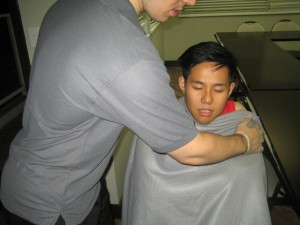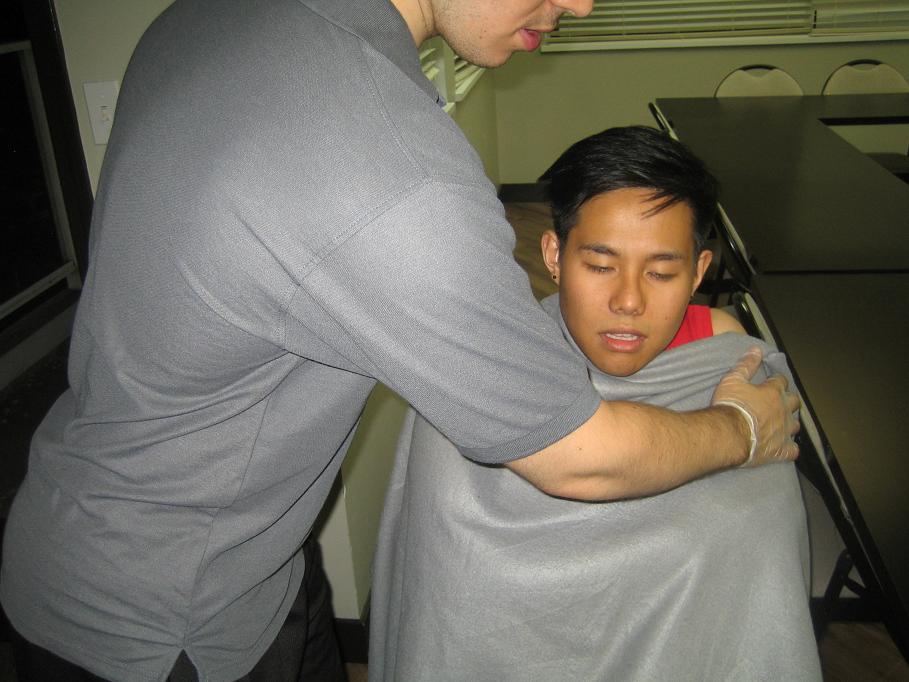Shock is no doubt a medical emergency. The potential risk of death is high if a proper medical response is not given. Shock occurs when there is not enough circulation in the body to sustain tissue and cell functions, causing a stoppage in the activities of the vital organs in the body. Administering resuscitation can help restore an adequate circulating blood volume in the body and to correct the decreased perfusion in the tissues and organs before irreversible damage occurs.
When the body is in shock, a drop in the blood pressure occurs, reducing the flow of oxygen and supply of nutrients needed by the vital organs of the body. If adequate blood flow is not restored, the vital organs like the brain, heart and lungs will cease to function because of the lack of supply of oxygen (hypoxia).
The material posted on this page on managing and recognizing shock and respiratory and circulatory emergencies is for learning purposes only. To learn to recognize and manage these emergencies sign up for a first aid and / or CPR course today.
Symptoms of Shock
The symptoms of shock may vary depending on the cause. Generally, these are the common symptoms:
- Pale, cold, clammy skin
- Shallow, rapid breathing and sometimes difficulty of breathing
- Anxiety
- Rapid, bounding and irregular pulse
- Thirsty or dry mouth
- Low urine output or dark urine
- Nausea and vomiting
- Dizziness, light-headed
- Confusion or disorientation
- Unconsciousness
Types of Shock

Shock can be categorized into different types according to the causes. They are the following:
- Hypovolemic- caused by severe blood and fluid loss which can include bleeding, dehydration, chronic vomiting, diarrhea, dehydration or severe burns.
- Cardiogenic- occurs when the heart is not able to pump blood from the heart to the vital organs effectively such as what occurs in heart attack, heart disease and heart valve disorders.
- Neurogenic – injury to the spine may cause damage to the nerves that control the function of the blood vessels. As a result, there is uncontrolled blood vessels relaxation and dilation, resulting in hypovolemia.
- Septic shock and anaphylactic shock- infections make the blood vessels dilate and cause severe allergic reaction.
- Obstructive- the blood flow is arrested. This usually occurs in cardiac tamponade, which is a condition where fluid accumulation takes place, thereby preventing the heart to pump blood effectively or may not be able to pump at all.
- Endocrine-a severe hormonal disorder may stop the heart to beat (e.g. hypothyroidism)
First aid management for shock
- Follow the DRSABCD action plan in the event you notice a person is having a shock
- Call 911
- If the person is unconscious, have him lie on his back and ensure that he is warm and comfortable. Loosen his clothing and if possible, raise his leg above his chest to promote blood flow to the vital organs. If you suspect spinal injury, never move the person.
- Give first aid when bleeding to prevent further blood loss by covering the wound.
- Do not give the person anything even if he is thirsty
- Reassure him, and stay with him until the ambulance arrives.
Reference:
Better Health Channel. Shock. Retrieved on June 27, 2014 from http://www.betterhealth.vic.gov.au/bhcv2/bhcarticles.nsf/pages/Shock.
